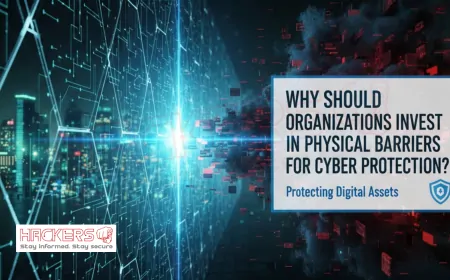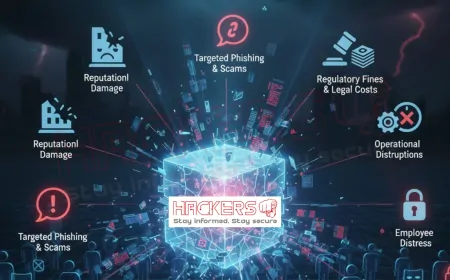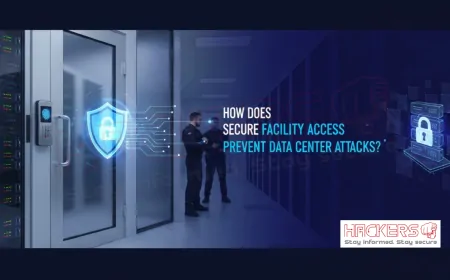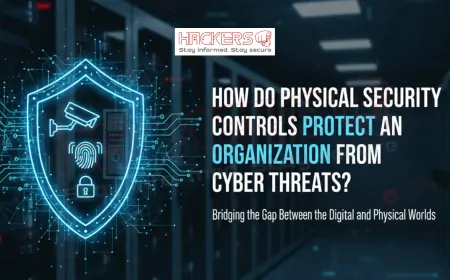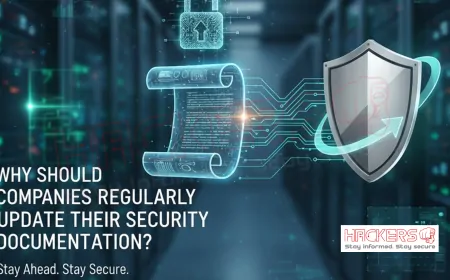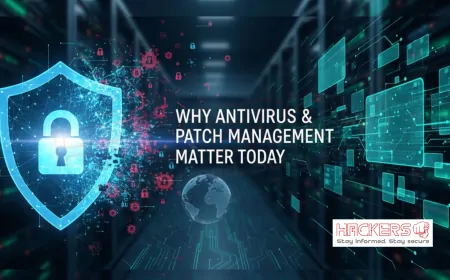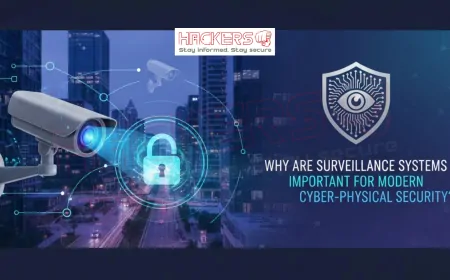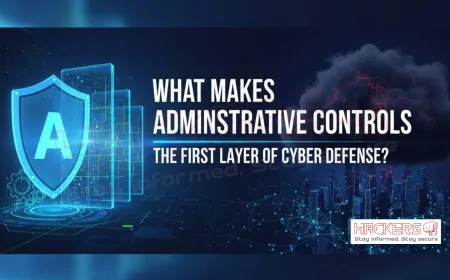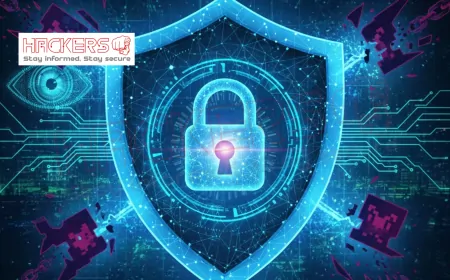How Will Digital Twins Create New Cyberattack Surfaces?
Imagine a perfect virtual copy of a jet engine, a hospital, or even an entire city. This copy runs in real time, mirrors every movement, predicts failures, and helps engineers make smarter decisions. This is a digital twin: a living, breathing replica of a physical object or system. Companies like GE, Siemens, and Tesla use them to save millions. Cities use them to manage traffic. Doctors use them to plan surgeries. But here is the catch: every digital twin is connected, data-rich, and deeply integrated with the real world. That makes it a hacker’s dream. A breach in a digital twin is not just a data leak. It can shut down factories, reroute planes, or harm patients. This blog explains, in plain language, what digital twins are, how they expand the cyberattack surface, and what you can do to stay safe in a twin-filled future.

Table of Contents
- Introduction
- What Is a Digital Twin?
- How Digital Twins Work
- How Digital Twins Expand the Attack Surface
- Specific Vulnerabilities in Digital Twin Systems
- Realistic Attack Scenarios
- Real-World Examples and Near-Misses
- How to Secure Digital Twins
- The Future of Digital Twins and Cybersecurity
- Conclusion
- Frequently Asked Questions
What Is a Digital Twin?
A digital twin is a virtual model of a real-world object, process, or system. It is not a static 3D image. It is alive. Sensors on the physical asset send data (temperature, pressure, vibration) to the twin. The twin uses AI, physics models, and historical data to simulate behavior. Then it sends insights back to improve the real thing.
Think of it as a mirror that not only reflects reality but also predicts the future.
- Used in manufacturing, energy, healthcare, smart cities, aerospace
- Powered by IoT sensors, cloud computing, AI, and 5G
- Can represent a single machine or an entire supply chain
- Updates in real time, sometimes thousands of times per second
How Digital Twins Work
The lifecycle has four main parts:
- Data collection: thousands of sensors on the physical asset
- Data transmission: sent via Wi-Fi, 5G, or wired networks to the cloud
- Simulation and analysis: AI models run predictions in the digital twin
- Feedback loop: insights sent back to control the physical system
For example, a wind turbine’s digital twin monitors blade stress. If it detects a crack forming, it adjusts pitch to reduce load and schedules maintenance before failure.
How Digital Twins Expand the Attack Surface
Every new connection creates risk. Digital twins multiply connections exponentially.
- More devices: millions of IoT sensors in factories and cities
- More data: petabytes flowing constantly
- More integrations: twins connect to ERP, SCADA, PLCs, and cloud platforms
- More users: engineers, operators, third-party vendors
- More code: complex AI models, custom APIs, simulation engines
A single compromised sensor can poison the twin. A hacked twin can send false commands to the real asset. The attack surface is not just wider. It is deeper and more critical.
Specific Vulnerabilities in Digital Twin Systems
Each layer has weak points.
| Layer | Vulnerability | Impact |
|---|---|---|
| Sensors/IoT Devices | Weak authentication, default passwords, no encryption | False data injected into twin |
| Network | Man-in-the-middle, unsegmented traffic | Data interception or alteration |
| Cloud Platform | Misconfigured APIs, shared tenants | Full twin compromise |
| AI Models | Data poisoning, model theft | Wrong predictions, sabotage |
| Control Systems | Twin sends commands to PLCs/SCADA | Physical damage or shutdown |
Realistic Attack Scenarios
Hackers do not need to break the twin directly. They exploit the chain.
- Sensor spoofing: fake temperature data makes a factory oven overheat
- Model poisoning: altered training data causes wrong maintenance alerts
- API hijacking: attacker gains admin access to the twin platform
- Feedback loop attack: twin tells a drone to crash or a valve to open
- Supply chain compromise: infected firmware update spreads to all twins
- Ransomware: lock the twin, demand payment to restore sync
In 2022, researchers showed they could hack a digital twin of a water treatment plant and change chemical dosing, endangering public health.
Real-World Examples and Near-Misses
Digital twins are already targets.
- GE Aviation: uses twins for jet engines. A breach could ground fleets
- Siemens: MindSphere platform powers thousands of industrial twins
- Singapore: virtual twin of the city used for urban planning
- BMW: factory twins optimize assembly lines
- NHS (UK): patient digital twins for personalized medicine
In 2023, a ransomware group claimed to have accessed a major manufacturer’s digital twin environment. While unconfirmed, it showed intent. The message was clear: twins are high-value targets.
How to Secure Digital Twins
Security must be built in, not bolted on.
- Device identity: give every sensor a unique, unforgeable ID
- Zero-trust network: verify every packet, every time
- End-to-end encryption: from sensor to twin to controller
- AI integrity checks: validate model inputs and outputs
- Digital twin sandbox: isolate simulation from control systems
- Immutable audit logs: record every change on blockchain
- Regular penetration testing: simulate twin-specific attacks
- Vendor risk management: audit all third-party components
Use standards like NIST 8259 (IoT security) and ISO 23247 (digital twin framework). Train teams on twin-specific threats.
The Future of Digital Twins and Cybersecurity
By 2030, Gartner predicts 70% of enterprises will use digital twins. They will be everywhere: in your car, your home, your body.
- Twin-of-twins: interconnected models of entire industries
- AI-driven autonomy: twins make decisions without humans
- 6G networks: faster, more reliable, but new attack vectors
- Quantum simulation: twins solve problems in seconds
- Cyber-physical fusion: no clear line between digital and real
Security will evolve too. Expect:
- Automated threat hunting in twin environments
- Self-healing twins that detect and isolate attacks
- Regulatory mandates for twin security certification
- Insurance products for digital twin risk
Conclusion
Digital twins are revolutionizing industry, healthcare, and urban life. They make the world smarter, safer, and more efficient. But they also create a vast new cyberattack surface: more devices, more data, more connections, and more critical outcomes. A breach is no longer just financial. It can be physical, operational, or even life-threatening. The good news? We can act now. Secure the sensors. Encrypt the data. Isolate the control. Audit the models. Treat every digital twin like the critical asset it is. The future is twin-powered. Make sure it is also cyber-secure.
Frequently Asked Questions
What is a digital twin?
A real-time virtual copy of a physical object, system, or process. It uses sensor data and AI to simulate, predict, and optimize the real thing.
Are digital twins only for big companies?
No. Small factories, farms, and even buildings use them. Cloud platforms make them affordable.
Can a digital twin be hacked?
Yes. Any part, from sensors to cloud, can be compromised. This affects both the twin and the real asset.
What is the biggest risk?
Feedback loop attacks. A hacked twin sends wrong commands, causing physical damage or shutdowns.
Do digital twins store sensitive data?
Yes. Design blueprints, operational data, patient records, or city infrastructure details.
Can IoT sensors be the weak link?
Absolutely. Many have weak security. A single fake sensor can corrupt the entire twin.
Is 5G a risk for digital twins?
It enables real-time updates but increases attack surface. Secure 5G slicing helps.
Can AI in twins be poisoned?
Yes. Feed it bad data over time, and it makes wrong predictions. This is called model poisoning.
Should twins connect to control systems?
Only when necessary. Use air gaps or one-way data diodes for critical operations.
Are there standards for twin security?
Yes. ISO 23247, NIST IR 8356, and IEEE P2875 are emerging frameworks.
Can ransomware lock a digital twin?
Yes. Encrypt the model or data feed. Restoring sync becomes the ransom demand.
Who is responsible for twin security?
Everyone: device makers, platform providers, IT teams, and operators.
Can digital twins detect attacks?
Smart ones can. Anomalies in data patterns trigger alerts. AI helps spot sabotage.
Is blockchain useful for twins?
Yes. It secures data provenance, logs changes immutably, and verifies sensor identity.
Will insurance cover twin breaches?
Some policies are emerging. Expect cyber-physical risk coverage to grow.
Can a twin operate offline?
Partially. It needs live data to be useful, but critical functions can be isolated.
Are patient digital twins at risk?
Yes. A hacked medical twin could alter treatment plans or expose health data.
How do I start securing my twin?
Map all components. Assess risks. Apply zero trust. Test with red team simulations.
Can digital twins be used for good in security?
Yes. Simulate cyberattacks in a safe twin to train defenses and predict breaches.
What is the future of digital twin security?
Automated, AI-driven, and built-in. Security will be as dynamic as the twins themselves.
What's Your Reaction?




























